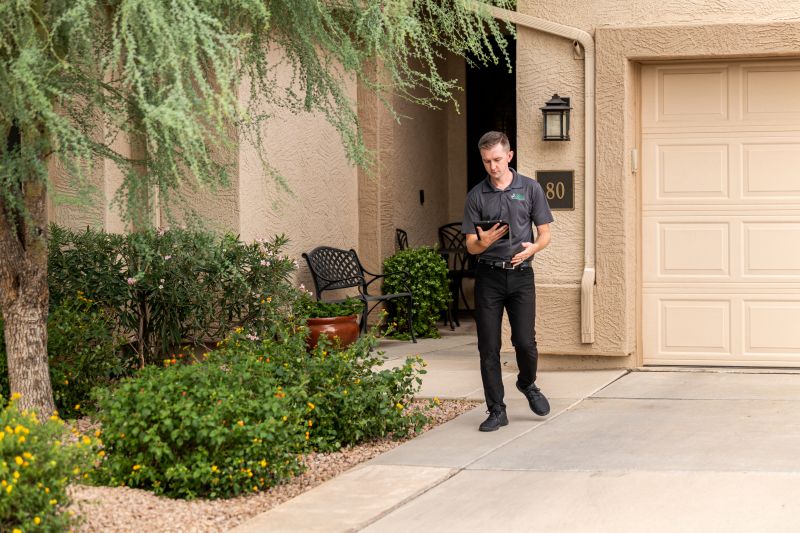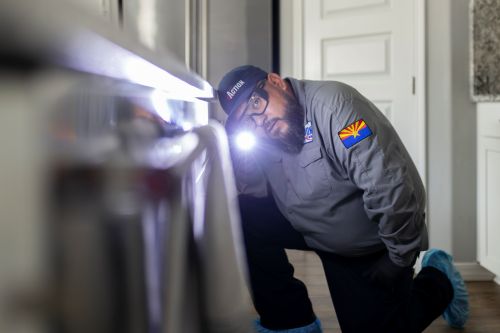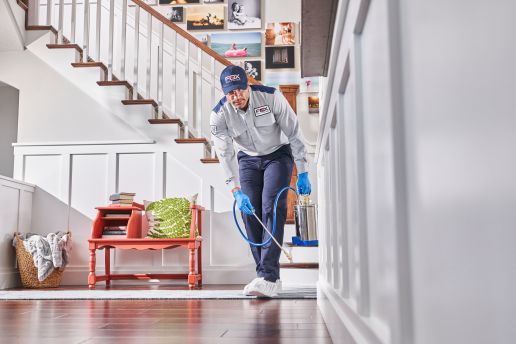How To Retain Pest Control Customers (Strategies & Tips)

Every pest control company wants to increase profitability and build long-term customer relationships.
Retaining customers means more to your bottom line, customer satisfaction, and trust in your brand. In this guide, we’ll look at practical tips to improve customer retention rates, how to calculate those rates, and why pest control customers leave.
By following these tips, your business will grow a loyal customer base and attract new customers.
Why Is Customer Retention Important for a Pest Control Business?
Customer retention is vital for a solid customer base, which equates to steady income, customer loyalty, and long-term success within the pest control industry.
Retaining loyal customers means they’ll return for repeat services, refer your business to others, and trust your brand for future pest control services.
Understanding customer lifetime value is vital as it allows businesses to measure the value of long-term customer relationships versus single transactions. It also measures the impact of marketing and customer success efforts and helps develop strategies to increase customer loyalty and engagement.
Retaining customers is also cheaper than acquiring new ones.
Studies show that acquiring a new customer can cost up to 7x more than keeping an existing one, and increasing customer retention by 5% can boost profits by 25-95%. Plus, loyal customers will engage with other services you offer and increase their lifetime value to your business.
Reduced costs: Retaining customers is cheaper than finding new ones.
Increased profitability: Loyal customers bring in more revenue over time.
Stronger relationships: Happy customers will refer to your services and leave reviews.
Now that we know customer loyalty is vital for businesses, retaining existing customers is easier and cheaper than attracting new ones. Your pest control business can grow and be profitable by focusing on customer retention.
Next, let’s look at how to calculate your customer retention rate.
How to Calculate Customer Retention Rate
Calculating your customer retention rate (CRR) will help your pest control business measure its success in retaining existing customers.
CRR is the number of customers you’ve kept over a period versus the number you started with, minus new customers.
You need to measure customer loyalty using multiple methods and metrics to get a full picture of customer loyalty. This includes combining quantitative data, behavioral insights and metrics like Net Promoter Score (NPS) and Customer Lifetime Value (CLV).
Here’s how to calculate CRR:
Initial Customer Count (C): The number of customers at the start of the period.
Final Customer Count (F): The number of customers at the end of the period.
New Customers Acquired (N): The number of new customers gained during the period.
Formula: CRR = ((F - N) / C) x 100
CRR Example:
FieldRoutes Pest Control LLC began the year with 200 (C) customers, gained 30 new customers (N), and ended the year with 210 (F) customers. Plugging these into the formula:
CRR = ((210 - 30) / 200) x 100 CRR = 90%
A 90% customer retention rate means your business is keeping its customer base well. Tracking this metric over time will help you fine-tune your customer retention strategies.
Next, let’s look at practical tips to improve customer retention.
How to Improve Your Pest Control Customer Retention
You can proactively prevent customer churn and build a long-term loyal customer base by consistently exceeding customer expectations and building strong relationships.
Here are tips to improve your customer retention rates.
1. Provide Exceptional Service
Providing outstanding service is one of the best ways to build loyalty. Customers value quick responses to queries, thorough pest inspections, and problem-solving solutions. Fast and reliable service will make your business stand out, and customers will come back for future pest control services.
Tips for outstanding customer service:
Respond to customer queries quickly through phone, email, or social media.
Conduct thorough pest inspections, not just visible problems but potential issues.
Provide clear and actionable solutions so customers feel their pest problem is solved.
By consistently providing great service, you build trust and strengthen customer relationships, which increases customer retention.
2. Stay in Touch with Customers
Regular communication is vital to building strong customer relationships.
Sending follow-up emails or calls after service, newsletters, and social media engagement will keep your good customers engaged. Tools like Marketing Pro will make this process easier; you can send customers personalized email campaigns and follow-up messages.
Customer feedback is also essential as it gives you valuable insights into customer experiences to improve service and build trust.
Some marketing strategies to stay in touch:
Send appointment reminders and follow-ups via email or text.
Share helpful tips and pest prevention advice on social media.
Use email newsletters to promote special offers and seasonal services.
Don’t be afraid to make a phone call. Nothing beats a personalized call from business owners to their customers.
With consistent outreach, you can reinforce your business’s value and ensure customer needs are always met.
3. Implement a Loyalty Program
Customer loyalty programs are a great way to encourage repeat business and get more repeat customers.
By repeatedly rewarding loyal customers for using your pest control services, you can build stronger relationships and increase each customer’s lifetime value.
Loyalty program ideas:
Offer discounts or free inspections for repeat business.
Create tiered rewards where customers earn points for each service and can redeem them for future discounts or free services.
Provide referral incentives where customers get discounts for referring new customers.
A well-structured customer loyalty program builds loyalty and differentiates your business in a competitive market.
4. Build Your Brand
A strong brand is a big factor in retaining pest control customers. Your brand is your reputation, and customers will stay with a company they trust. Consistent messaging, positive online reviews, and involvement in the local community will increase customer retention.
Customer data can be used to create personalized experiences and make targeted recommendations to increase loyalty and optimize customer interactions.
Ways to build your brand:
Get happy customers to leave reviews on Google and other platforms.
Keep branding consistent across all communications from your website to social media.
Host community events and position your brand as a local trusted business.
Investing in your brand leaves a lasting impression and builds customer loyalty.
5. Aim for Maximum Transparency
Transparency is key to building trust with your customers.
Pest control customers should always know what to expect—who’s coming to their door, when, and what service is being performed.
Using tools like FieldRoutes, you can send automated communications about appointment times, technician details, and service updates to make customers feel at ease.
How to be transparent:
Send clear, automated reminders before appointments with details of who will arrive and what work will be done.
Be upfront about pricing so there are no hidden fees or surprises.
Follow up after service with a summary of what was done.
Following these will increase customer retention and grow your business. Now let’s look at the common reasons customers leave and how to fix them.
Most Common Reasons Why Pest Control Customers Leave
Even with the best of strategies, some pest control customers will still leave your business. Understanding and fixing the most common reasons for customer churn will help reduce attrition and retain loyal customers.
Ineffective Pest Control
Customers will leave if they don’t feel the pest control services are effective.
Customers lose faith in your brand if a pest problem persists after treatment or if inspections aren’t thorough enough. To prevent this:
Do thorough pest inspections to identify all issues.
Make treatments specific to each customer’s pest problem.
Offer follow-up services to confirm the pests are gone and address any remaining concerns.
Being proactive and thorough builds trust and customer satisfaction.
Poor Customer Service
Poor customer service is a major reason for customer churn.
Customers expect prompt responses, professionalism, and helpfulness. Common examples of bad customer service are missed appointments, no follow-up, or unprofessional behavior. To prevent this:
Train your team to put customer interactions first and resolve issues quickly.
Implement accountability to ensure service consistency.
Use FieldRoutes to automate appointment reminders and improve responsiveness.
Good service increases customer loyalty and retention.
Unsolicited Sales Tactics
Aggressive or unsolicited selling will push customers away.
While upselling extra services will increase short-term revenue, focusing too much on unnecessary services will damage customer relationships. Instead:
Put customers' needs first and offer services that solve their pest problems.
Build trust through good service, not through upselling.
Customers will stay longer if they feel valued and not pushed.
Lack of Communication
Breakdowns in communication will lead to customer dissatisfaction.
If customers feel ignored or uninformed, they’ll switch to a competitor. To improve communication:
Use automated tools to send timely updates, reminders, and service confirmations.
Have an open channel for customers to contact you, whether by email, phone number, or social media.
Follow up after each service to ensure satisfaction.
Communication can also generate word-of-mouth marketing, where satisfied customers share their experiences and recommendations with friends and family, which will influence potential customers’ buying decisions.
Better communication leads to a better customer experience and, thus, little incentive to leave your business.
Invest in the Right Pest Control Technology
Customer retention starts with good service, good communication, and addressing the common reasons customers leave.
However, keeping customers loyal is much easier with the right tools.
Invest in pest control software like FieldRoutes to streamline your operations and improve communication and transparency in every customer interaction.
FieldRoutes does the tasks for you, like scheduling, sending reminders, and following up, which means customer satisfaction and more time for your team to focus on good service.
Schedule a free demo to see how FieldRoutes Operations Suite can help you build stronger customer relationships and increase retention rates.
Wanting more? Check out some of our other blog posts!





